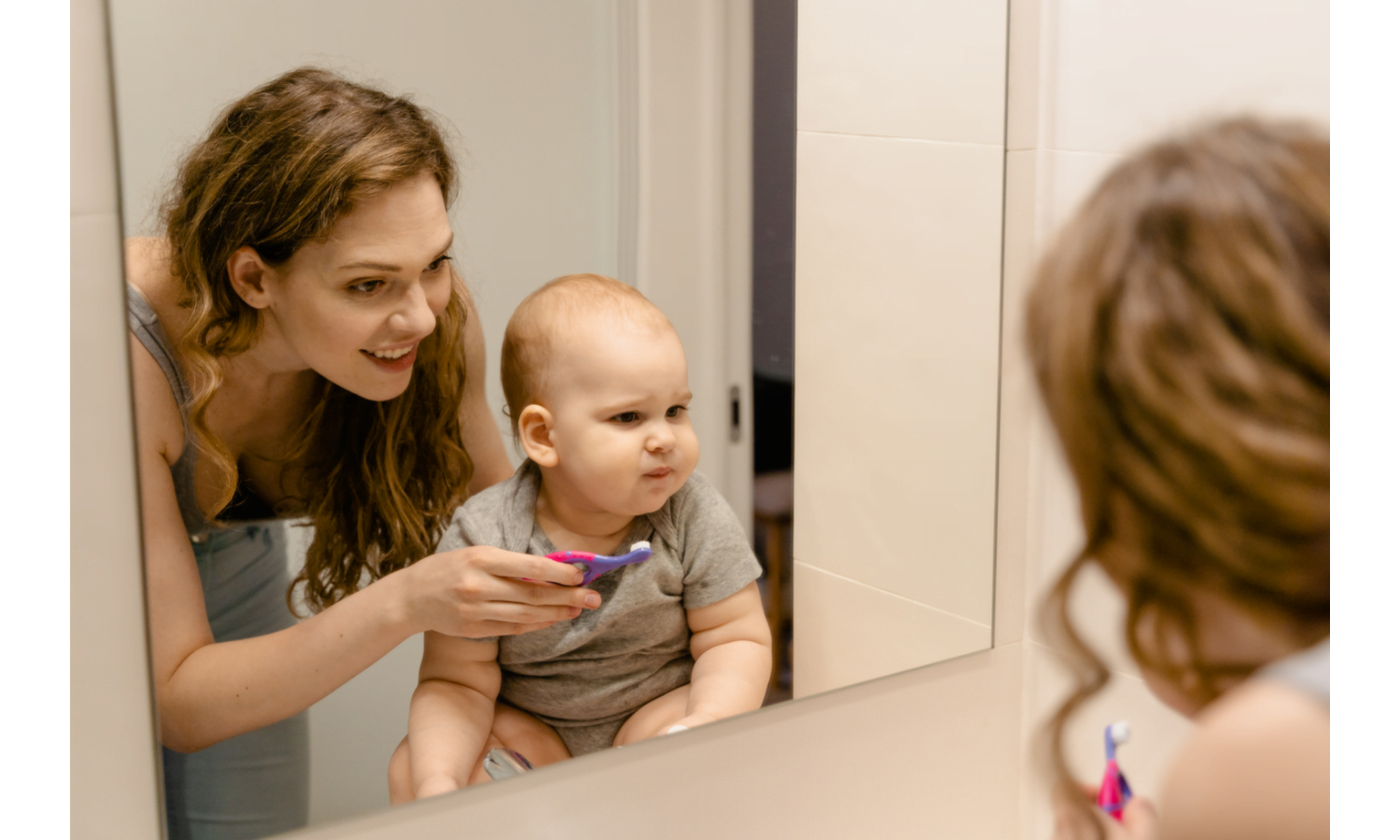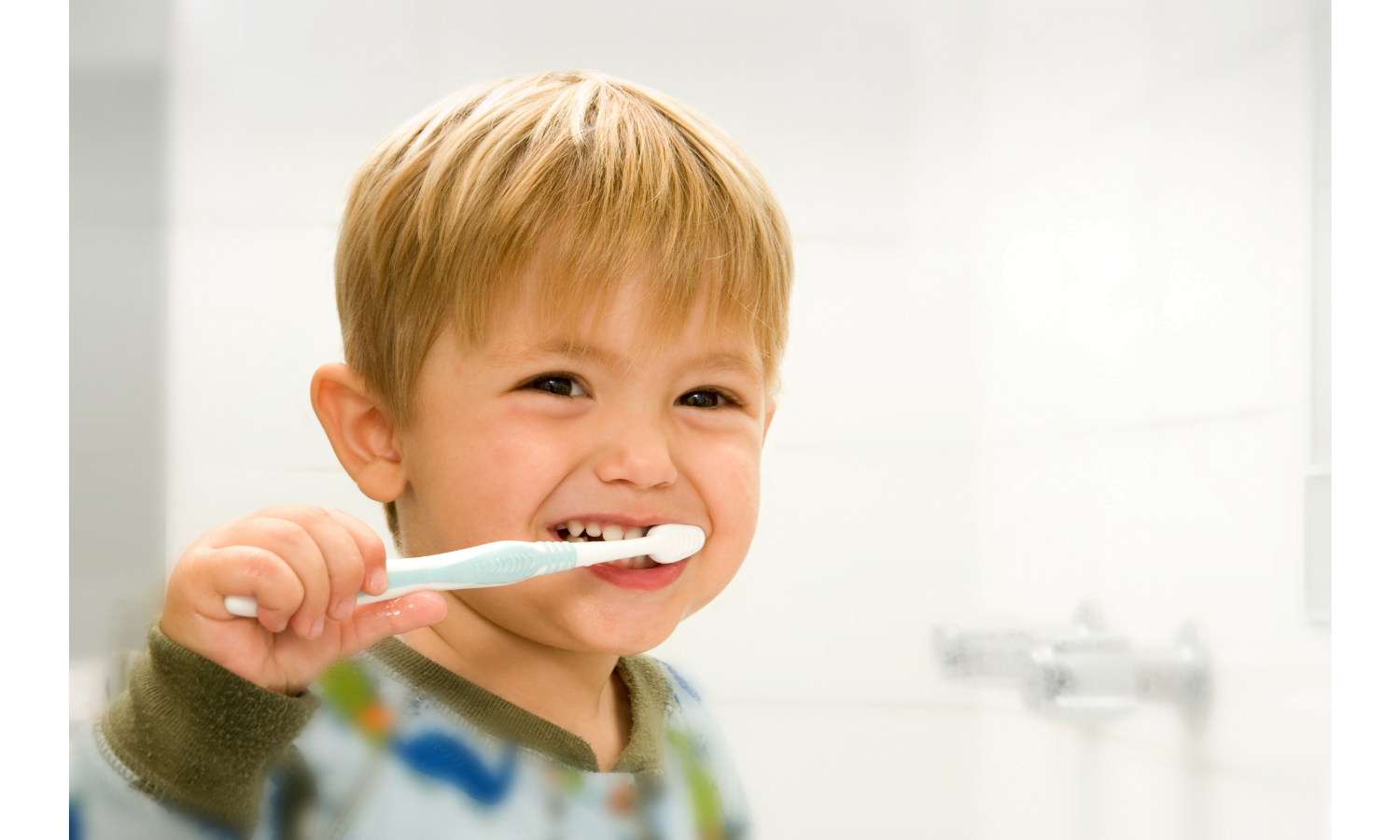How to Look After your Children’s Teeth
20 April 2022Add more fun to your children’s oral hygiene routine by checking out our top tips and everything you need to know about helping your children grow up strong, healthy teeth and a confident smile!
From babies to 3 years
Most babies begin developing their teeth between 4-7 months old, but it can be as early as 3 months and even as late as 12 months. Dental care needs to begin as soon as your babies’ teeth start to come through. As you would when it comes to feeding your baby, you may find that you can reduce wriggling and help your baby look forward to brushing time by stimulating them with funny noises such as aeroplanes, trains, cars, ducks, whatever your baby responds best to. So do you need to do anything special for teeth care from 4-7 months up to 3 years old?
- Brush twice daily as you would an adult, once in the morning, once at night. This helps set route and ensure brushing becomes a habit from an early age.
- Use only a smear of toothpaste – when the first teeth emerge. You can gradually increase the amount as a full set of baby teeth develop.
- Stick to the recommended fluoride toothpaste amounts, no less than 1,000ppm of fluoride. This will help increase your baby’s or toddlers tolerance to this. As a maximum, you should only go up to family toothpastes fluoride amounts of between 1,350 – 1,500 pp, but this would be too much in those early stages.

3-6 years old
In their early years, ensuring that children brush their teeth properly can be stressful. So why not take some of the stress out by visiting your local supermarket with them to choose a toothbrush? This could contain one of their favourite TV series or movie characters. Of course you can continue making this fun by seeing who can brush for the longest, or in the most circular fashion. Some top tips:
- Supervise your children brushing their teeth, again twice a day. Once ideally needs to be before bed at night.
- Children should now be brushing for approximately 2 minutes.
- Help guide your children’s hands to brush in a circular motion so that they know how to brush correctly, front and back.
- Use a pea sized amount of toothpaste. This needs to be more than what it was as a baby, but it does not need to be excessive. Think how much you need to brush yours, then how large your child’s teeth are and what they would need.
- Stick to recommended fluoride levels of between 1,000 – 1,500 ppm.
If you struggle to get your child engaged with brushing their teeth, you could also consider using star or reward charts, songs that make teeth funny or even something relaxing or enjoyable for your child to listen to whilst they are brushing. As time progresses, this will help brushing their teeth become second nature for your children.
7 years plus
By the age of 7, typically most children will be able to brush their own teeth thanks to the routine that you’ve helped establish in them by the first two steps. Until you are confident that they are brushing properly each and every time, it may still be beneficial to supervise them to ensure that they do so.
- Let your children know that there is no rush, if possible, remove incentives that benefit them from brushing their teeth as quickly as possible.
- Make sure they brush twice daily, for roughly two minutes.
- Higher levels of fluoride in toothpaste become acceptable here, so a family toothpaste of 1,350 to 1,500 ppm will be perfectly fine for your children’s teeth.

Some tips for every age
- Perhaps less so for babies up to three years, but placing a mirror in the bathroom where they can see where they have brushed so far will show your children what other teeth remain needing to be cleaned.
- You can create a game out of this by using an egg timer, alarm or countdown timer to ensure that they have finished their teeth by the time it rings.
- Safety first. Don’t let your children run around with toothbrushes in their mouths.
- Lead by example by making a point of brushing your teeth correctly, and in a circular motion. Do so in front of babies and toddlers so they can learn through watching you.
- Take your child to the dentist. Dental care for children is free via the NHS, but taking them to appointments with you will show your children that going to the dentist is not a scary experience, but relaxed, comfortable and pain free.
- Consider Fluoride varnish and fissure sealants to help protect your child’s teeth against decay. This option is available as soon as a child’s adult teeth begin coming through, usually around the age of 6 or 7.
- Think about their diet. It can be tempting to reward children with sugary treats or drinks for good behaviour, but this can help them develop a sweet tooth from an early age. Instilling healthier food choices such as fruit and vegetables will reduce the amount of acid present in your children’s mouths.
- Leave brushing until a couple of hours since your child has had sugary food or an evening meal. By brushing straight away when teeth are already weakened by acid, you can damage the teeth’s integrity longer term. Leave it until their teeth have had a chance to recover.
So there we have it! Some fun tips to help make brushing your children’s teeth both correctly, and as stress free as possible. You can book an appointment for your child by clicking here today.
